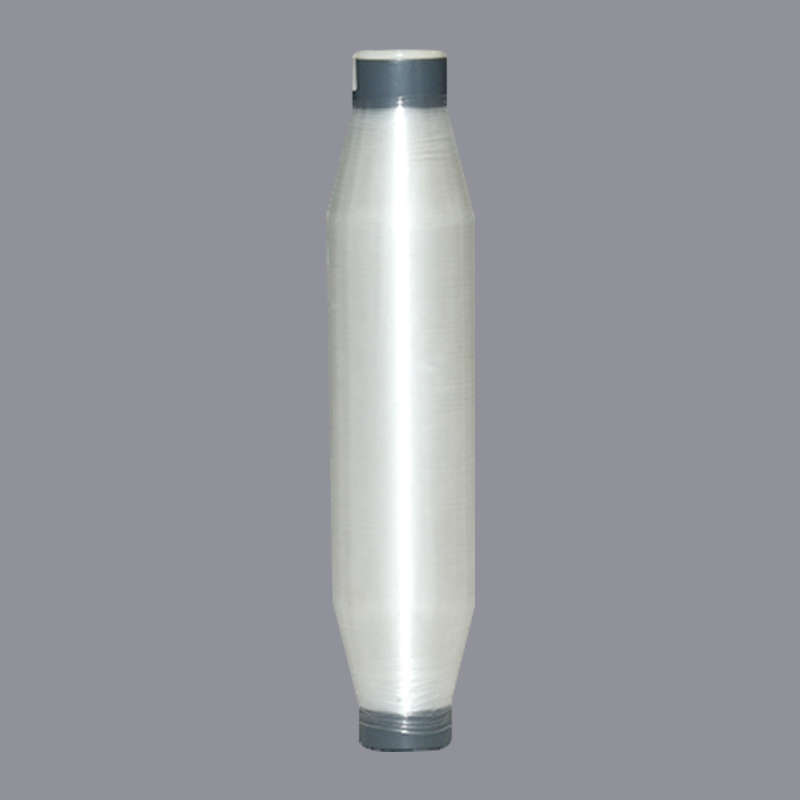It is made with Bio-base PLA, fully biodegradable Feature: 1. Industrial compost product 2. Made with PLA 3. Eco-frie...
READ MORELow Melting Yarn is a special type of textile yarn, usually made of high-performance synthetic fiber materials such as polyester (polyester) and nylon. These materials have good thermoplasticity and can melt and bond at lower temperatures, hence the name "Low Melting Yarn".
1. Polyester Low Melting Yarn
Material composition: 100% polyester (PET), a common thermoplastic synthetic fiber.
Features: high strength, good wear resistance, small shrinkage, smooth surface, easy processing.
Melting point range: generally between 85°C and 110°C, depending on the molecular weight and type of additives.
Uses: widely used in clothing, footwear, automotive interiors, filter materials and other fields.
2. Nylon Low Melting Yarn
Material composition: 100% nylon (PA), with excellent elasticity and wear resistance.
Features: soft, elastic, chemically resistant, suitable for occasions requiring high elasticity and flexibility.
Melting point range: usually between 80°C and 105°C.
Application: commonly used in high-end clothing, sportswear, medical supplies, automotive interiors, etc.
3. Other possible materials
Polyurethane (TPU): Some low-melting point yarns will be added with polyurethane materials to enhance their flexibility, tear resistance and antibacterial properties.
Antimony-free materials: In recent years, environmentally friendly low-melting point yarns have begun to use antimony-free catalysts to reduce heavy metal pollution and meet environmental regulations.
Is low-melting point yarn environmentally safe?
1. Non-toxic and harmless
Low-melting point yarns are made of synthetic fiber materials such as polyester and nylon, and do not contain harmful chemicals such as formaldehyde and heavy metals. Some products have also passed international environmental certifications such as SGS, ROHS, and REACH to ensure their safety during use.
2. Degradability
Although low-melting point yarns themselves are not completely biodegradable, no glue or adhesive is used in their production process, but bonding is achieved by heating and melting, which reduces pollution to the environment. Compared with traditional glue bonding, the production process of low-melting point yarn is cleaner and more environmentally friendly.
3. Antibacterial treatment
Some high-end low-melting point yarns are specially treated with antibacterial, mildew-proof, and anti-mite properties, which are suitable for medical, household, baby products and other fields.
4. Antimony-free process
Antimony-containing catalysts are often used in the production of traditional low-melting point yarns, but in recent years, there have been antimony-free alternatives, such as the use of environmentally friendly catalysts such as titanates and silanes, which effectively reduce the risk of heavy metal pollution.
What are the common applications of low-melting point yarns?
Low-melting point yarns are widely used in many industries due to their unique physical properties and environmental characteristics. The following are their main application areas:
1. Textile and clothing industry
Sewing thread: used for sewing of clothing, footwear, bags and other products, with good self-adhesion and strength.
Elastic band: used for elastic adjustment of clothing, gloves, socks and other products.
Lace and woven fabrics: used to make high-end lace, decorative fabrics, 3D flying woven uppers, etc.
Underwear webbing: used for sports bras, functional clothing, etc., to provide comfort and support.
2. Home textiles
Mattresses: used to make memory foam mattresses, sound insulation cotton, etc., to provide good support and comfort.
Glue-free cotton: used to make glue-free filling cotton, suitable for cribs, children's products, etc.
Silk-like cotton: used to make silk-like fabrics, with good breathability and softness.
3. Industrial and construction fields
Automotive interiors: used for car seats, door panels, sound insulation materials, etc., to provide good comfort and durability.
Filter materials: used for air conditioning filters, industrial filters, food factory filtration systems, etc.
Building sound-absorbing materials: used for building sound insulation boards, sound-absorbing cotton, etc., to improve the acoustic performance of buildings.
4. Medical and health fields
Medical supplies: such as surgical gowns, protective clothing, medical mattresses, etc., with good hygiene and comfort.
Baby products: such as cribs, baby clothes, diapers, etc., to ensure safety and non-toxicity.
Medical dressings: used for wound care, medical bandages, etc., with good air permeability and antibacterial properties.
5. Other special applications
Shoe materials: used to make linings and insoles for sports shoes and casual shoes.
Air conditioning filters: used for the filter system of car air conditioners and household air conditioners.
Electromagnetic shielding materials: used for the shielding layer of electronic equipment, providing good electromagnetic isolation performance.
Glass and carbon fiber cloth: used for the reinforcement layer of composite materials to improve the strength and toughness of the material.

It is made with Bio-base PLA, fully biodegradable Feature: 1. Industrial compost product 2. Made with PLA 3. Eco-frie...
READ MOREPlease fill out the form below and our team will contact you as soon as possible.
Addres: No.66 Qiaogang Road, Haian, Nantong City, Jiangsu Province, China
E-mail: [email protected] [email protected]
Copyright ? GC FIBER All Rights Reserved. Eco-Friendly Textile Products Manufacturer Biodegradable Yarn Company
